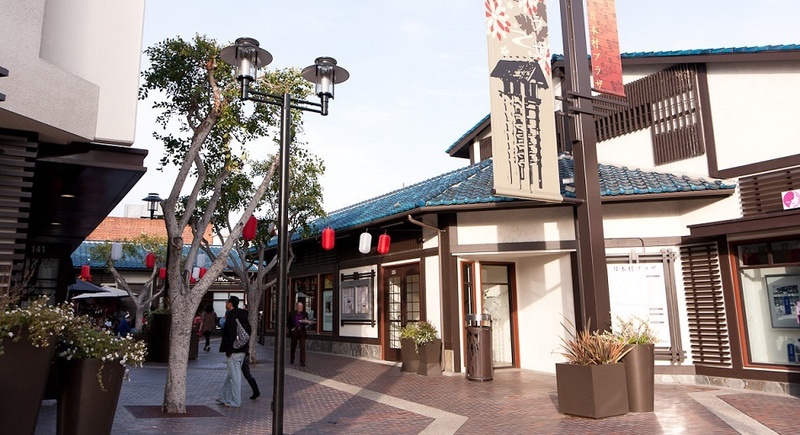Slideshow above: The few remaining urban enclaves of Japanese American culture and identity.
Have you ever thought about what it means to identify as Japanese American? Why do some people use the term ”Nikkei American” instead of “Japanese American”?
Over the past 60 years, Nikkei American demographics have been changing significantly. These changes include low immigration rates from Japan (leading to a decreasing Nikkei American population relative to the rest of the Asian American population), an aging population, an increase in interracial marriages, and a move away from Japantown and urban centers to the suburbs. The younger generations are more multiracial and more mixed generationally, provoking ongoing discussions about the future of the community and what it means to be Japanese American.
The community has had national conventions about how we might rethink what it means to be Japanese American. The Nikkei 2000 National Conference was held with the goal of “actively meet[ing] the challenges of the Japanese American community’s evolving needs.” Eric Tate, who co-founded one of the first Hapa student groups at the University of California, Berkeley, in the early 1990s, recapped the conference findings in the conference’s booklet, Nikkei 2000 Summary and Analysis:
“We have to begin by getting rid of the old notions of who is Japanese American…I know at various times, only persons with a Japanese surname could play basketball, or a woman had to have a certain quantum to be a Cherry Blossom contestant. This broader inclusiveness applies to gay, lesbian, bisexual, and transgender persons, disabled or handicapped person, those who are Japanese-speaking, those who have one Japanese parent or grandparents, and basically anyone else who doesn’t fit the traditional notion of a JA. Again, these are just examples, but my point is that we need to change the rules. Because yesterday’s rules do not apply to today’s game, and if we keep playing by the same old rules, we will lose.”
“Nikkei” has become a term that includes not only people of later and mixed generations, but, as Tate asserts, “anyone who doesn’t fit the traditional notion of a [Japanese American].” For this reason, many individuals and organizations have shifted from the term “Japanese American” to the term “Nikkei American” to be more inclusive.
On a personal level, while I have always identified as Japanese American and felt enmeshed in community, I have also felt the narrowness of who and what it has referred to, not having grown up participating in mainstream Japanese American community activities. Growing up in Berkeley, I often helped out at my father’s store (Richard’s Jewelers in Albany), where most of his customers were Japanese American. As a Nisei born and raised in Berkeley then incarcerated at Topaz as a teenager, my father knew Japanese Americans both from the neighborhood where he grew up and from camp. He also participated in Japanese American bowling and golf clubs and brought my family to the local annual bazaars. Between the customers who gathered at the store and the community events that we attended, I took for granted that we were part of the community.
Yet, at the same time, I never played basketball and we did not regularly attend a church, so my connections to the community have never been the same as my Japanese American peers who were involved with these activities. As a result, I’ve always had mixed feelings about my place in the community. I take for granted that I am part of it at the same time that I do not share many of the experiences that seem central in defining it, namely, participation in Japanese American sports and religious institutions.
I reflected on this often while conducting research on U.S.-born and raised Nikkei Americans who live in Japan as adults. As I conducted interviews asking people about their experiences growing up and how they identified, a number of people said that they did not identify as Japanese American. Their reasons shed some light on where the boundaries of being Japanese American lie and how they might shift in the future.
Not a Minority in Hawai‘i
Rick was born and raised in Hawai‘i on the island of O‘ahu. He grew up not using the term “Japanese American.” He reflected that,
‘…..growing up in Hawai‘i, you don’t say Japanese American, usually you say Japanese…in Hawai‘i, especially after the ‘50s, being Nikkei was kind of, you know, you’re part of the ruling class, right? So you kind of get a little resentment from the other ethnicities there because of that. Kind of like being white on the mainland, I think.”
Rick’s comments were characteristic of most Hawai‘i Nikkei I spoke with who said that when growing up they never thought much about their ability to blend in and feel included as part of mainstream society in Hawai‘i – a stark contrast to many Nikkei on the mainland. Of course, Nikkei were not always well-represented in politics or mainstream society in Hawai‘i. But as a “local” culture has developed, and as Nikkei have become more well represented, their experiences are generally different from those of Nikkei who are minorities on the U.S. continent. And while Nikkei in Hawai‘i do not have access to all the same kinds of privilege that white people enjoy on the mainland or, indeed, in much of the world, Rick suggests that, by some measures, they might be better compared to whites on the mainland than to Nikkei on the mainland.
In addition, Rick notes how Japanese American is not a term commonly used in Hawai‘i. Several Hawai‘i interviewees, related that the term “Japanese American” is used by the government or academics, but not by most people in everyday conversations in Hawai‘i. People of Japanese ancestry in Hawai‘i more commonly describe themselves just as Japanese. This may be because ethnic Japanese are not a minority in Hawai‘i and it is commonly understood that they can be ‘local,” in contrast to Nikkei on the continent who are often assumed to be immigrants.
*This article was originally published in Nikkei Heritage (Fall 2015: Winter 2016, Vol 26, No. 1).
© 2016 National Japanese American Historical Society







